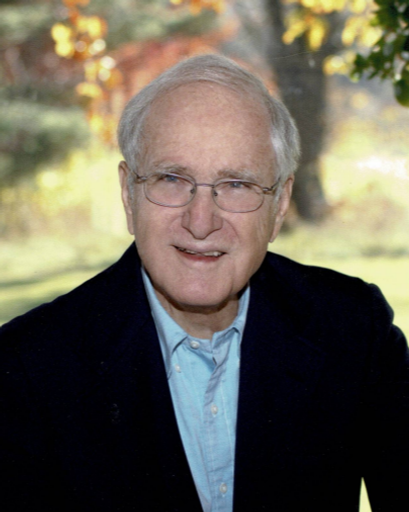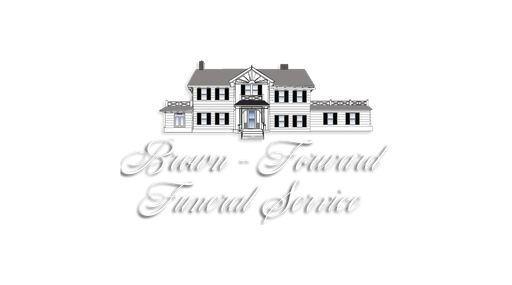

William Charles McCoy
December 10, 1923 — March 9, 2023
Chagrin Falls
Past Services
Visitation
Funeral Service
Friday, April 14, 2023
Starts at 4:00 pm (Eastern time)
William Charles McCoy
WILLIAM CHARLES MCCOY, intellectual property lawyer, former mayor of Hunting Valley, Ohio, beloved father, uncle, step-father and mentor, passed away on March 9 at age ninety-nine. Among his proudest achievements were his family, serving in the U.S. Navy in World War II, arguing before the Supreme Court twice, creating case law and saving natural areas in both Ohio and Ontario, Canada.
A community-spirited, lifelong Republican, Bill started life in Akron in 1923, before the family moved to Cleveland and his sister, Katharine (Kitty), was born. Bill went to public school until his Sunday school teacher, who taught at Hawken School, recommended him for a scholarship. After graduating from middle school, he attended Exeter Academy.
Bill showed his community spirit early. At age sixteen, he created a live bee exhibit for the Cleveland Museum of Natural History, the start of a long association with the museum. On Hawken School’s character card, the teacher remarked, “His sympathies are broad and his aspirations genuine. I would rank Bill as Hawken School’s Dependable Citizen No. 1.”
At his Exeter graduation in 1941, Bill took seriously the fiery wartime commencement words of then-principal Dr. Lewis Perry, “There are only two sides, no neutral course remains….If he takes no side, he is on Hitler’s side; if he does not act, that is an act for Hitler…. There is a real call for our sacrifice…”
Bill turned eighteen three days after Pearl Harbor. A few weeks later he volunteered for the U.S. Naval Reserve. A member of the Class of 1945, he studied engineering in an accelerated program at Princeton and Cornell, graduating in June 1944. After completing midshipman school, he was commissioned as an ensign and began serving as the assistant engineering officer on the USS General J. H. McRae (AP 149), a troopship traveling unescorted at a speed of eighteen knots. It sailed to France, Egypt, Iran, Iraq and Karachi, India (now Pakistan). He was honorably discharged as a lieutenant (j.g.) in 1946.
Safely home in Ohio after the war, he graduated from Case Western Reserve Law School in 1949, passed the bar and joined his father’s firm, Evans and McCoy. Three years later Bill married Julia Millikin Nash, an elementary school teacher, tennis champion and descendant of Cleveland pioneers. She was active in the Junior League, Planned Parenthood and the Day Nursery Association, among others. Bill and Julia had four children: Sarah, Louise, William “Sandy” and Peter.
As an intellectual property lawyer, Bill took on complex cases involving patents and trade secrets. Years before such novelties would become widespread, Bill brought home from his clients items for which he had recently sought patents, including such souvenirs as new, safer batting helmets, pop-top aluminum cans and Scünci hair ties. As the youngest member of the firm, he was assigned to work with Alan Freed, the disc jockey who famously popularized the phrase "rock and roll" on mainstream radio, though Bill himself favored Handel.
Pragmatic and solution oriented, Bill made case law while twice arguing before the Supreme Court. His most famous case was Kewanee v. Bicron, a historic intellectual property suit involving state-level trade secret law and its possible conflicts with federal patent law. Bill’s client, Bicron, made crystals used in the detection of ionizing radiation, as did Harshaw, a division of Kewanee Oil Company. In federal district court, Bill argued that Bicron could use some processes not protected under patents because federal patent law preempted state trade secret law.
Bill felt he had an inside track in the case. To quote him, “In the course of the trial, the judge asked me a convoluted question, in effect, which trade secrets did Bicron care about and which did it not care about. I gave an honest answer. The judge enjoined Bicron from using any of the trade secrets which it did not care about. I doubt that Jones Day [the firm representing Kewanee] ever understood what the judge had done.” The district court did not buy his argument about preemption, though this was later reversed by the Sixth Circuit Court of Appeals, which found that Kewanee could protect twenty trade secrets but not twenty others.
In 1974, Kewanee v. Bicron went to the U.S. Supreme Court. There were sixteen amicus briefs, fifteen against Bill. Erwin Griswold, former dean of the Harvard Law School and a partner in Jones Day, argued the case for Kewanee. The Supreme Court reversed the Sixth District and decided that state trade secret laws and federal patents could co-exist. Bill won dissents on the decision from Justices William Brennan and William Douglas.
Kewanee’s victory was Pyrrhic. The Supreme Court did not reverse the district court over the twenty trade secrets important to Bicron, which eventually grew into a multimillion dollar company and made Bill a director.
Bill’s tenacity paid off when he litigated a complex, decades-long suit begun in 1956 over a patent process his father and others owned in the manufacturing of car bumpers. The case, General Motors v. Devex Corp, landed before the Supreme Court in 1983. This time Bill won: the decision established the principle that a copyright infringer has to pay interest at the prime rate from the time an infringement begins. When it was all over, Bill won his clients $26 million ($78.5 in today’s dollars) in damages for patent infringement.
In another long-running suit, Bill was local counsel for General Tire in the sprawling international case known as Oil-Extended Rubber Litigation. The litigation focused on patents for development of synthetic rubber in the aftermath of Pearl Harbor, an event that disrupted world trade in natural rubber. Bill, working with British, Canadian, South African and Swedish lawyers in the trans-global litigation, won the case for his client in the Sixth Circuit Court of Appeals.
Bill was also busy in his spare time. He served as trustee and treasurer of the Ohio chapter of the Nature Conservancy from 1975 to 1986 and as president of the Ohio Conservation Foundation. The foundation persuaded the Ohio legislature to provide for easements to conservation organizations with the aim of preserving property.
After serving on the council for the Village of Hunting Valley, Bill became mayor in 1986. He had particular success in saving natural areas. In 1987, the Chagrin River Land Conservancy (now Western Reserve Land Conservancy) was founded in his living room. Along with his wife, Julia, Bill established the Severance Hall Preservation Fund and both served on the Musical Arts Association.
Sadly, Bill lost Julia, his wife of thirty-three years, to cancer in 1985. He continued to work on causes important to him. In 1989 Bill was elected trustee of the Cleveland Museum of Natural History’s board of directors. Serving on both the biodiversity and conservation and executive committees, he stepped in to purchase a 50.8-acre tract of land at the western end of the North Kingsville Sand Barrens and later donated most of it to the museum. In 1991 Bill became the first chairman of the museum’s natural areas committee. During his tenure, he presided over the museum’s conservation of some of the most fragile ecosystems in northeast Ohio, including McCoy Fen, Singer Lake Bog, critical parcels on Kelleys Island and the Grand River Terraces.
Bill was perhaps most intimately involved in the protection of McCoy Fen, his namesake preserve. He played an integral role in fundraising for the conservation of this site, which the museum eventually dedicated as a scientific state natural area. In recognition for his conservation work at the preserve, on May 7, 2005, Pymatuning Creek Fen State Nature Preserve was officially renamed the William C. McCoy State Nature Preserve. One of the most biodiverse and unique of the museum’s preserves, it is home to an astonishing thirty two rare species of plants and animals, and is one of only two locations that harbor the State-endangered spreading globeflower.
Bill also saved islands in Pointe au Baril, Ontario, the archipelago he and his parents began visiting in the 1940s. In 1997, he founded an American nonprofit, Great Lakes Basin Conservancy, to benefit Canadian conservation, mostly the Georgian Bay Land Trust, whose board he served on. A 35-acre out-island, Little McCoy, which he bought in 1950 and gave to his children, became a Georgian Bay Land Trust property and was thus saved from development in perpetuity.
Eleven years after losing Julia, Bill married his longtime friend, widow Eleanor Yager Bonnie, originally of Louisville, Kentucky. They traveled widely and provided generous support for Cleveland cultural institutions. Eleanor gave Bill insights into art. When he introduced her to island life in Pointe au Baril, she formed a group of water color painters. Bill and Eleanor spent many happy summers on the island and led an active social life there and in Ohio until she passed away in 2014.
Among his many acts of generosity, Bill conceived of and helped publish two books; Hunting Valley: A History and The Severances; funded the installment of sculptures at Hawken School and the Cleveland Museum of Natural History and donated to Hawken Veteran’s Memorial, finished in 2021.
Bill had wonderful caregivers and helpers in his last years. The family thanks Michelle Boyd, Susan Skunta, Carmen Tolliver and Sinda Johnson, as well as the stalwart James Flowers.
Bill was predeceased by wives Julia and Eleanor. He leaves behind four children: Sarah (Jim Buchanan, children Elizabeth and Hope Buchanan); Louise Franke (Hans); William “Sandy” (Natasha Beery, children Julia Campos-Beery and Clara Beery, grandchild Sol Campos) and Peter (children Maxine and Cleo). He also leaves stepchildren Sevier Bonnie (Jennifer, children Catherine and G. William); Louisa Bonnie (Greg Scarich); Josephine Anderson (Chace, children Eleanor and Claire, grandchild Mae Essiet).
Donations in his memory can be made to the Natural Areas Fund, Cleveland Museum of Natural History, 1 Wade Oval Drive, Cleveland, OH 44106 [https://1023.blackbaudhosting.com/1023/Natural-Areas]; the Severance Preservation Fund, Cleveland Orchestra, 11001 Euclid Ave, Cleveland, OH 44106 [https://www.clevelandorchestra.com/donate/]; and the Great Lakes Basin Conservancy, P.O. Box 504, Gates Mills OH 44040 [http://www.greatlakesbasinconservancy.org/donate.html].
A funeral service will be held at 4PM on Friday, April 14 at St. Christopher’s-by-the-River, reception to follow at The Hunt Club. FRIENDS MAY CALL AT BROWN-FORWARD, 17022 CHAGRIN BLVD, SHAKER HTS., OH, ON THURSDAY, APRIL 13 FROM 2 to 4PM.
Past Services
Visitation
Thursday, April 13, 2023
2:00 - 4:00 pm (Eastern time)
Brown-Forward Funeral Home
Funeral Service
Friday, April 14, 2023
Starts at 4:00 pm (Eastern time)
St. Christopher by-the-River Episcopal Church
Livestream
Guestbook
Visits: 1142
This site is protected by reCAPTCHA and the
Google Privacy Policy and Terms of Service apply.
Service map data © OpenStreetMap contributors




